With the wide choice in wine confusing consumers, it’s up to retailers to keep the category easy to navigate and easy to experiment in
British drinking habits are changing. Suppliers say the number of people trying to reduce their alcohol consumption has surged and we are instead opting for fewer, but more interesting and higher-quality drinks. But how has this macro trend affected c-stores?
According to Sid Ali, owner of four Nisa stores in Aberdeenshire, the way people shop the wine category has changed a lot. Rather than sticking to the brands they know and trust, they are branching out to try bottles made from other grape varieties and countries.
“Whereas we used to find people were very brand loyal and shopped by brand, now we find they are much more adventurous,” says Sid. “In the past the top sellers would always have been Blossom Hill, Hardys, Jacob’s Creek and such, but now we are expected to have a much wider and more premium range such as Oyster Bay and Châteauneuf du Pape.
“There’s much less brand loyalty now because people seem to want to explore different regions and grape varieties. I see a lot more people opting for wines from Bulgaria, Argentina and Chile and other countries that people would never have considered in the past.”
Research by IGD backs up Sid’s conclusion. It has found that wine is the top-ranking category where shoppers are open to purchasing new and different products.
Portuguese wine producer Wine With Spirit has researched the way that consumers choose their wine and found that they base choices on moments and emotions, and not on technicalities they don’t really understand. João Pedro Montes, CEO of Wine with Spirit, points out that producers often speak to consumers on a highly technical level, using jargon such as tannins, terroirs or ageing methods, without them being understood.
Research commissioned by Asda conducted by OnePoll (1,500 UK respondents between 13-14 July 2017) suggests the words consumers understand best are dry, crisp and full-bodied, but they are baffled when it comes to descriptions such as complex or dense, or terms such as elegant and flamboyant.
Its research has also shown that more than one-fifth of consumers say they can find the vast amount of wine to choose from intimidating and don’t know where to start when it comes to picking a new bottle.
Of those questioned, almost two-fifths (39%) of Brits could not name any wine varieties and a further 17% thought there were only three grape varieties to choose from – red, white and rosé.
Dan Harwood, head of wine education for Halewood Wines & Spirits, says the key to merchandising wine is interacting with shoppers in their own language. He says: “Convenience shoppers want to be able to go in and out of the shops in as little time as possible. It’s our responsibility to make the experience simple and enjoyable with straightforward signage and clear direction to complementary products, which are all key to encouraging shoppers to part with their hard-earned cash.”
Price decisions
One tough element of the wine category is deciding how to price it. According to IGD, wine is the ninth highest-ranking category where price affects purchasing decision. But, at the same time, 58% of consumers agree it is sometimes worth paying extra for higher quality.
Barrie Seymour, a Londis retailer in West Yorkshire, says his biggest challenge is competing with Aldi, Lidl and even B&M stores.
“We have an Aldi, Lidl and a B&M store nearby and people are constantly looking for good value for money. In order to compete I have to get near the £4.50 price they are offering. I stock lots while wines are on promotion and that allows me to keep selling wine at about £5.”
Barrie recommends Secretary Bird wine while it’s on promotion. He sells four varietals for £5.49 and sells about 100 bottles a week.
But Amy Giacobbi, marketing manager at Continental Wine & Food Ltd (CWF), points out that with exchange and duty rates pushing prices up, the £5-£6 a bottle price point is becoming increasingly difficult for retailers to hit.
Sid says one issue with wine is that people will always buy it when it’s on promotion, but then refuse to buy it when it goes to rrp. “We’ve made the decision to cut our range of wine right back and reduce the difference between the promotional price and the rrp – usually the rrp is now only about 60p higher than the promotional price – to ensure we still sell some even when it’s not on promotion.
“Some retailers will probably read that and think I’m mad, because the margins are so low, but at least this way we sell lots on promotion and a decent amount off promotion, which means that overall we do get a better profit.”
But it’s important retailers don’t forget the opportunity in premium wines. Shaun Heyes, channel director for Treasury Wine Estates, says one of the clear trends over the past three years has been the growth in demand for premium wines, but some convenience retailers have yet to fully seize this opportunity.
“Commercial wines (below £6) are a large part of the market yet they are not in strong growth and are not a big cash margin opportunity. Sales of both £6-£8 wines and £8+ wines are in significant growth and more importantly offer the retailer the opportunity to make more cash margin.
“You do need to cater for shoppers at all price points, and offering the best-selling skus of the biggest commercial brands, such as Blossom Hill White Zinfandel, is important. But don’t focus on low-price wines only. You should free up some space on your shelves for more premium wines (£6-£10) by reducing some of your commercial range – not least because you want to avoid range duplication.”
Budge Brands managing director Budge Dhariwal believes retailers would do well to lose a few of the sub-£5 bottles of wine and have a wider selection of £6-8 bottles. “This may well encourage occasional visitors to return on a more regular basis to see whether they’re missing out on a new varietal that they will no longer be offered in one of the larger multiples.
“By creating a decent wine offering and displaying it with careful thought, convenience stores can sell much more higher-priced wine than they may believe,” he says.
Sid Sidhu, of Sukhi’s Simply Fresh in Kenilworth, Warwickshire, finds his customers are willing to pay high prices for high quality wine.
“I have noticed people willing to pay a higher price for their wine nowadays. We now have 30 or 40 bottles at above £10. Of course, we still have the value bottles as it’s important to provide these as well.
“Something which makes us stand out is our breadth of range in the premium end. We have quite a few residents who are Western European. In those countries people pay higher prices for their wine. Some will regularly buy a bottle at £16 to £20 and they won’t even consider the cheaper varieties.”
But high-quality wines aren’t going to sell themselves. Sid Sidhu promotes the wines he sells with Facebook posts and POS. “For the higher end we have POS with tasting notes, and we have plenty of signs to remind shoppers of other products that might go well with the products, such as cheese and crackers.”
All it may take to increase sales is a little extra thought. As Dhariwal sums up: “A little bit of homework from retailers can significantly improve the quality of the wine range they offer. Providing a customer with a good bottle of wine at a fair price means they’re far more likely to return to buy another in the future.”
Men’s club
Treasury Wine Estates brands 19 Crimes and Gentleman’s Collection are designed to appeal to male millennials. It says that 18- to 34-year-old men currently buy less wine than women in the same age group, men aged 35-50 and men aged 50+.
Trends
Demand for alcohol-free wine moves up a gear
Eisberg is ramping up support for Britain’s biggest professional cycle races following record sales during last year’s sponsorship of the Tour of Britain.
The move into cycling follows brand research which identified a shift in alcohol-free shoppers, with men drinking the wines regularly as an alternative when moderating their alcohol as part of a healthy lifestyle choice.
The 2017 agreement will see the brand amplify links with cycling through sprints jersey sponsorship of The Matrix Fitness Grand Prix, The OVO Energy Women’s Tour (the UK’s only UCI Women’s World Tour stage race) and The OVO Energy Tour of Britain, in addition to sponsorship of the leader’s jersey in The Tour Series men’s event.
Andrew Turner, director of wine at Eisberg brand owner Halewood Wines & Spirits, says: “It’s going to be a great summer of cycling and Eisberg will be there every stage of the way. On the tour last year cyclists told us that they were increasingly moderating their alcohol intake for health and fitness reasons, so we’ll be sampling at every race so that fans can toast the action with the UK’s number one alcohol-free wine.”
Sampling support during the 2016 Tour of Britain saw more than 10,000 people introduced to the range across the eight-day period, contributing to a 40% increase in sales year on year.
Eisberg’s success is reflective of the category as a whole, with sales of alcohol-free wine flourishing in the UK. Over the past 12 months, the category has experienced a 31% increase in value. Eisberg has a 58% market share (Nielsen 52 w/e 25 March 2017).
Harvest Fruit wine success
Fruit wines may have hit the market relatively recently, but are now worth £71m in total off-trade, and this value has increased 17.5% in the past year alone, according to Nielsen.
One brand showing strong growth is Blossom Hill Spritz, which as launched in 2016. Spritz is a lighter range of wines with an abv of 5.5%.
Shaun Heyes, channel director at brand owner Treasury Wine Estates, says: “We firmly believe that at this stage of the category’s development finding new formats and driving awareness of them is key. Our research highlighted that fruit wine consumers tend to shop in convenience and are looking for solutions that tap into the ‘grab and go’ mission. As a result, we launched the 250ml can format across our flavour range.
“More than one-third of households are now single households and this trend is increasing. These shoppers are often visiting convenience and independent stores to purchase meals for tonight. Having smaller formats like minis that appeal to this mission is a great solution for people wanting to buy wine, but who don’t wish to invest in a whole bottle.”
The company adds that with 89% of shoppers in the convenience channel buying their wine to consume that day and 40% of shoppers drinking their wine within two hours of purchase (HIM CTP), it is vital retailers offer chilled wines.
What percentage of consumers understand wine descriptors (Asda OnePoll amongst 1,500 UK respondents July 13-14 2017):
dry 76%
crisp 52%
full-bodied 56%
complex 15%
dense 12%
elegant 13%
flamboyant 6%
Source
Nikki Cutler
















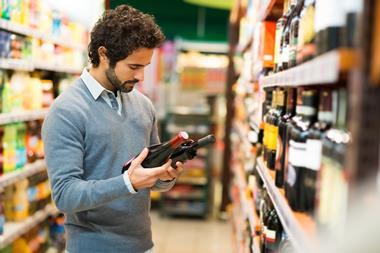
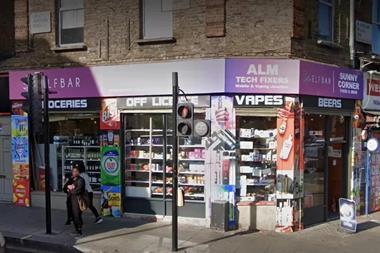
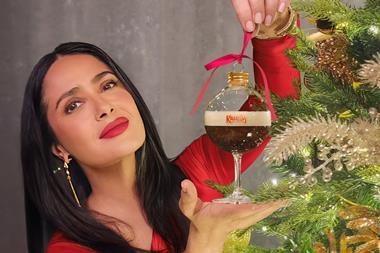
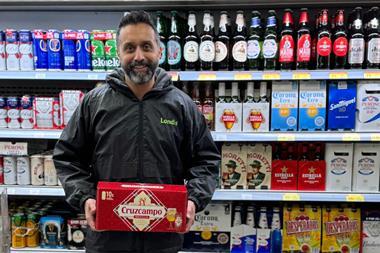


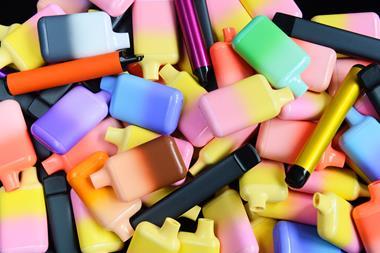





No comments yet